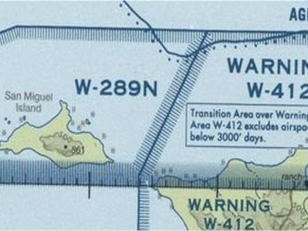top of page
quick Blog Reads

Free quick blog reads! Here you will find shortened reads of our full length aviation lessons. You will also find links to the full lessons that include: videos, podcasts, flashcards, and quizzes.


The 5 C’s of Getting Lost in Aviation: A Pilot’s Guide to Safe Navigation
Even with today’s advanced avionics, GPS navigation, and flight planning tools, pilots can still find themselves disoriented or uncertain of their exact location. Whether it’s due to weather changes, distraction, equipment malfunction, or simple human error, getting lost in the air can happen to anyone. That’s why flight instructors teach a timeless checklist known as the “Five C’s” — a set of actions to help pilots remain calm, regain situational awareness, and navigate back


Understanding Usable vs. Unusable Fuel in Aviation
Fuel management is one of the most critical aspects of aviation safety and performance. Pilots and aircraft engineers must not only ensure that an aircraft carries enough fuel for the planned flight but also understand how much of that fuel is usable versus unusable . While the terms might sound similar, they have distinct meanings that directly affect flight planning, aircraft certification, and safety margins. Study this full length lesson (video, podcast, flashcards, and


Understanding Fuel Requirements in Aviation: VFR & IFR Explained
Fuel planning is one of the most critical aspects of safe flight operations. Whether you’re flying under Visual Flight Rules (VFR) or Instrument Flight Rules (IFR), having adequate fuel on board isn’t just good airmanship—it’s a regulatory requirement. Running out of fuel remains a leading cause of engine failure accidents in general aviation, which makes understanding the rules and the reasoning behind them essential for every pilot. In this post, we’ll break down fuel requi


CFI Checkride Prep: How and Where to Start
The CFI Checkride is arguably the most difficult Checkride for many students to prepare for and pass on the first attempt. The amount of knowledge and preparation required vastly surpasses that demanded of other exams. Because of this, it can be hard to know where to start when "eating this elephant." Below are tips and tricks we have used with our students over the years that have increased organization, confidence, knowledge, and pass rates. Know Your Stuff Seems like a "no


Magnetic Deviation vs. Magnetic Variation in Aviation
When it comes to navigation, understanding magnetic direction is essential for every pilot. Since aircraft headings and navigation...


Pilotage vs. Dead Reckoning in VFR Flight Planning
When flying under Visual Flight Rules (VFR), pilots have several navigation techniques at their disposal. Two of the most fundamental—and...


WAAS and LAAS/GBAS in Aviation
Modern aviation relies heavily on satellite-based navigation systems to increase accuracy, reliability, and safety. Two of the most...


GPS Sensitivity Modes in Aviation: En-Route, Terminal, and Approach
Modern aviation relies heavily on GPS navigation, especially for IFR operations and performance-based navigation (PBN). However, GPS...


RAIM and FDE in Aviation GPS Navigation
Global Positioning System (GPS) technology has become an essential tool for modern aviation. While GPS provides accurate position,...


DME in Aviation: Understanding Slant Range vs. Straight Line Distance
In modern aviation, navigation is built on a combination of ground-based systems and satellite technology. One of the most important...


VOR Checks in Aviation: Ensuring Accuracy and Safety
The VHF Omnidirectional Range (VOR) system has been a cornerstone of aviation navigation for decades. While satellite-based systems like...


Understanding VORs in Aviation: A Pilot’s Guide
In modern aviation, navigation is a blend of tradition and technology. While GPS has become the dominant tool for pilots today,...


Temporary Flight Restrictions (TFR) in Aviation
In aviation, awareness of airspace restrictions is one of the most important responsibilities of a pilot. While much of U.S. airspace is...


Wilderness Area Airspace in Aviation
Aviation is about freedom of flight, but that freedom comes with responsibilities—especially when flying over environmentally sensitive...


Air Defense Identification Zones (ADIZ) in Aviation
Airspace management in the United States and around the world isn’t just about traffic flow and efficiency—it’s also about national...


National Security Areas (NSAs) in Aviation
The U.S. National Airspace System (NAS) is designed to balance efficiency, access, and safety. While pilots are generally free to operate...


Published VFR Routes in Aviation: VFR Flyways and VFR Corridors
Flying under Visual Flight Rules (VFR) gives pilots the flexibility to navigate by sight rather than relying on an air traffic clearance....


Military Training Routes (MTRs) in Aviation
When flying under Visual Flight Rules (VFR), general aviation pilots must be aware of more than just controlled airspace, airports, and...


Understanding Alert Areas in Aviation
In aviation, situational awareness is critical for safety. One way the Federal Aviation Administration (FAA) helps pilots stay informed...


Understanding Military Operations Areas (MOAs) in Aviation
The U.S. airspace system accommodates a wide variety of users, from student pilots in training to high-speed military jets. To safely...


Understanding Warning Areas in Aviation
The U.S. airspace system includes several types of special use airspace (SUA), each with its own rules and restrictions. While prohibited and restricted areas are relatively well known, warning areas are another important designation that pilots, especially those flying near coastal regions, must understand. Study this full length lesson (video, podcast, flashcards, and quiz) here: Full Length Lesson > What is a Warning Area? A warning area is a designated section of airspace


Understanding Restricted Airspace in Aviation
The national airspace system is designed to balance freedom of flight with the need for safety and security. While much of the sky is...


Understanding Prohibited Airspace in Aviation
Airspace regulations exist to maintain both flight safety and national security. Among the different types of restricted zones that...


Aircraft Speed Limits in Aviation
Airspace regulations in the United States are designed to ensure safe and efficient operations for all types of aircraft—from small...


Understanding Special VFR (SVFR) in Aviation
Pilots flying under Visual Flight Rules (VFR) are required to maintain certain weather minimums to ensure safety and separation from...


Understanding Class G Airspace in Aviation
The U.S. airspace system includes several classifications, each serving a specific purpose in maintaining safety and order in the skies....


Understanding Class E Airspace in Aviation
The U.S. airspace system is divided into multiple classes, each designed to ensure safe and efficient flight operations. Among these,...


Understanding Class D Airspace in Aviation
Airspace in the United States is categorized into different classes to provide structure, safety, and organization in the skies. Each...


Understanding Class C Airspace in Aviation
The U.S. airspace system is carefully structured to manage the flow of traffic around different types of airports. Class C...


Understanding Class B Airspace in Aviation
The U.S. National Airspace System is divided into several classes, each designed with specific rules and requirements to keep aircraft...


Understanding Class A Airspace in Aviation
Airspace is divided into different classes to help organize and regulate the flow of air traffic. Each class comes with its own rules,...


Understanding V-Speeds in Aviation: The Key to Safe and Efficient Flight
Every airplane has a set of critical speeds that define how it can be safely flown. These speeds, known as V-speeds, are standardized...


The Different Types of Airspeed in Aviation Explained
Airspeed is one of the most important performance measurements in aviation. It influences everything from takeoff and landing distances...


The Different Types of Altitude in Aviation Explained
Altitude is one of the most fundamental concepts in aviation, but it’s also one of the most misunderstood by new pilots. To the untrained...


Understanding Weight and Balance Categories: Normal and Utility in Aviation
Weight and balance are at the heart of safe aircraft operation. Every pilot learns early on that an airplane must be loaded properly within its specified limits to ensure safe flight characteristics. What’s often less emphasized, but equally important, is that airplanes can be certified under different weight and balance categories. These categories—most commonly Normal and Utility—dictate not only how much weight an aircraft can carry and where it can be placed, but also wha


Airplane Weight and Balance: Why It Matters in Aviation
Weight and balance are among the most critical considerations in aviation. Whether flying a small training aircraft or a large commercial...


Radar Summary Charts vs. Satellite Charts in Aviation
Weather is one of the most critical factors in aviation safety and efficiency. To help pilots plan and execute flights, meteorologists...


Surface Analysis Charts and Low-Level Prognostic Charts in Aviation
For pilots, weather charts are some of the most valuable tools available when preparing for a flight. Two of the most widely used...


AIRMETs and SIGMETs in Aviation: Understanding the Different Types
When it comes to aviation weather, pilots must be equipped with the right information to ensure a safe flight. Among the most important...


Aviation Weather Reports Explained: METAR, TAF, and PIREP
Weather is one of the most important factors in aviation safety. Pilots rely on accurate and timely weather reports not only to plan...


ATIS, AWOS, and ASOS in Aviation: What Pilots Need to Know
Weather reporting and communication systems are critical to aviation safety. Pilots depend on accurate, timely, and consistent...


The 3 Types of Weather Briefings in Aviation
Weather is one of the most important factors in aviation safety. Before every flight, pilots are required to obtain a weather briefing to...


Severe Weather Hazards in Aviation: Tornadoes, Squall Lines, Lightning, and Hail
Aviation and severe weather are a dangerous combination. While modern aircraft are built to withstand a variety of conditions, certain...


The 3 Types of Icing in Aviation: Clear Ice, Rime Ice, and Mixed Ice
Icing is one of the most dangerous weather hazards in aviation. When supercooled water droplets in clouds or precipitation strike an...


The 3 Stages of a Thunderstorm and Their Impact on Aviation
Thunderstorms are among the most hazardous weather phenomena in aviation. They can bring severe turbulence, lightning, hail, strong...


Weather Fronts and Aviation: Understanding the Impact on Flight Operations
Weather fronts are critical to aviation safety and flight planning. A front is the boundary between two air masses of different...


Fog and Aviation: Understanding Different Types of Fog
Fog is one of the most significant weather hazards in aviation. While it may look harmless from the ground, fog drastically reduces...


Understanding Cloud Types in Aviation
Clouds play a critical role in aviation, influencing flight safety, comfort, and decision-making. For pilots, recognizing cloud...


Cloud Classes and Aviation: A Pilot’s Guide
Every pilot quickly learns that “clouds are weather.” They signal stability or instability, turbulence or smooth air, icing hazards or...


Temperature Inversions in Aviation: What Pilots Need to Know
In aviation, understanding weather isn’t just a matter of curiosity—it’s a matter of safety. One of the more subtle but critical...
bottom of page